Marco Monteiro
Perception Encoder: The best visual embeddings are not at the output of the network
Apr 17, 2025Abstract:We introduce Perception Encoder (PE), a state-of-the-art encoder for image and video understanding trained via simple vision-language learning. Traditionally, vision encoders have relied on a variety of pretraining objectives, each tailored to specific downstream tasks such as classification, captioning, or localization. Surprisingly, after scaling our carefully tuned image pretraining recipe and refining with our robust video data engine, we find that contrastive vision-language training alone can produce strong, general embeddings for all of these downstream tasks. There is only one caveat: these embeddings are hidden within the intermediate layers of the network. To draw them out, we introduce two alignment methods, language alignment for multimodal language modeling, and spatial alignment for dense prediction. Together with the core contrastive checkpoint, our PE family of models achieves state-of-the-art performance on a wide variety of tasks, including zero-shot image and video classification and retrieval; document, image, and video Q&A; and spatial tasks such as detection, depth estimation, and tracking. To foster further research, we are releasing our models, code, and a novel dataset of synthetically and human-annotated videos.
ACORN: Adaptive Coordinate Networks for Neural Scene Representation
May 06, 2021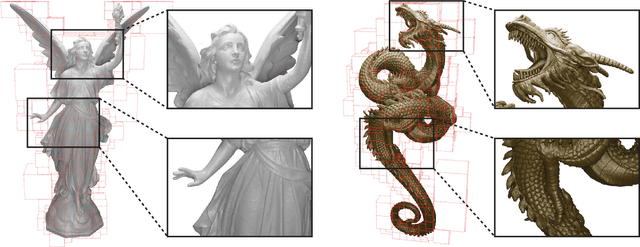
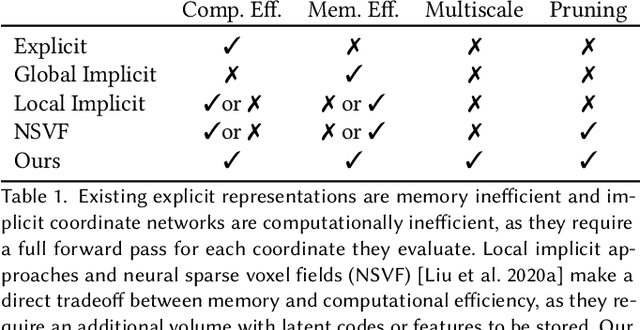
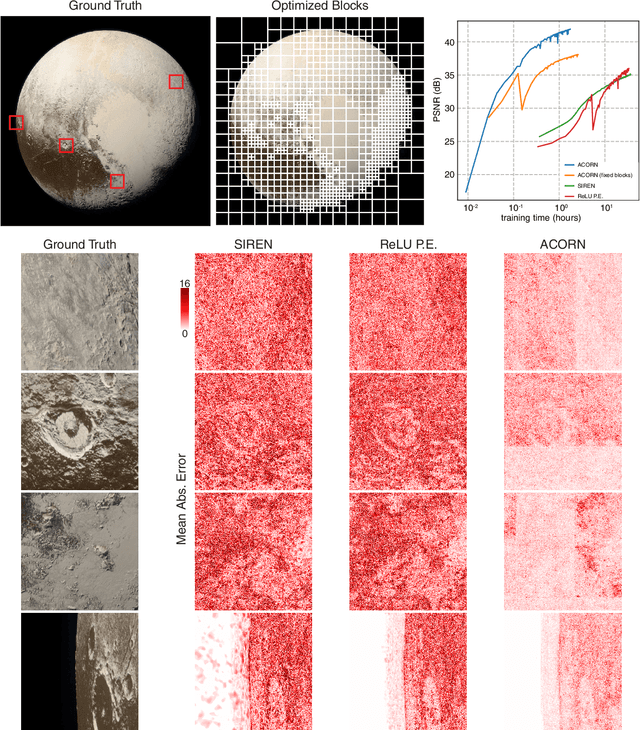

Abstract:Neural representations have emerged as a new paradigm for applications in rendering, imaging, geometric modeling, and simulation. Compared to traditional representations such as meshes, point clouds, or volumes they can be flexibly incorporated into differentiable learning-based pipelines. While recent improvements to neural representations now make it possible to represent signals with fine details at moderate resolutions (e.g., for images and 3D shapes), adequately representing large-scale or complex scenes has proven a challenge. Current neural representations fail to accurately represent images at resolutions greater than a megapixel or 3D scenes with more than a few hundred thousand polygons. Here, we introduce a new hybrid implicit-explicit network architecture and training strategy that adaptively allocates resources during training and inference based on the local complexity of a signal of interest. Our approach uses a multiscale block-coordinate decomposition, similar to a quadtree or octree, that is optimized during training. The network architecture operates in two stages: using the bulk of the network parameters, a coordinate encoder generates a feature grid in a single forward pass. Then, hundreds or thousands of samples within each block can be efficiently evaluated using a lightweight feature decoder. With this hybrid implicit-explicit network architecture, we demonstrate the first experiments that fit gigapixel images to nearly 40 dB peak signal-to-noise ratio. Notably this represents an increase in scale of over 1000x compared to the resolution of previously demonstrated image-fitting experiments. Moreover, our approach is able to represent 3D shapes significantly faster and better than previous techniques; it reduces training times from days to hours or minutes and memory requirements by over an order of magnitude.
pi-GAN: Periodic Implicit Generative Adversarial Networks for 3D-Aware Image Synthesis
Dec 02, 2020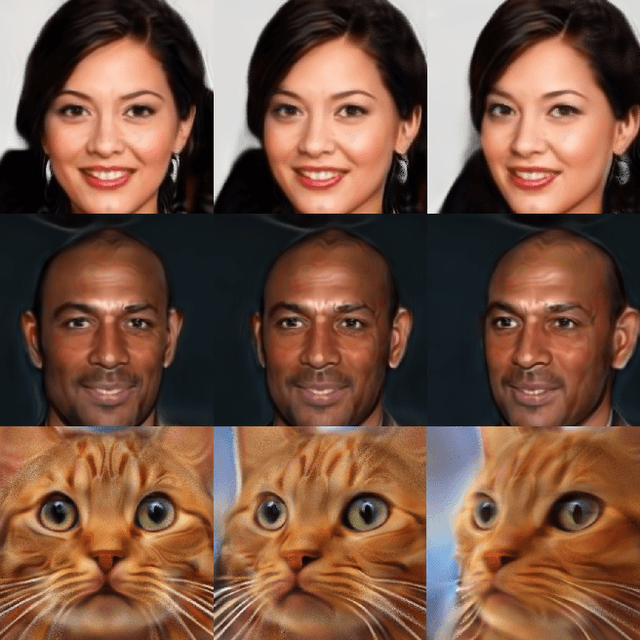


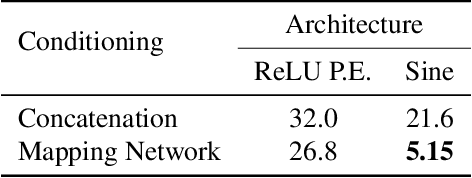
Abstract:We have witnessed rapid progress on 3D-aware image synthesis, leveraging recent advances in generative visual models and neural rendering. Existing approaches however fall short in two ways: first, they may lack an underlying 3D representation or rely on view-inconsistent rendering, hence synthesizing images that are not multi-view consistent; second, they often depend upon representation network architectures that are not expressive enough, and their results thus lack in image quality. We propose a novel generative model, named Periodic Implicit Generative Adversarial Networks ($\pi$-GAN or pi-GAN), for high-quality 3D-aware image synthesis. $\pi$-GAN leverages neural representations with periodic activation functions and volumetric rendering to represent scenes as view-consistent 3D representations with fine detail. The proposed approach obtains state-of-the-art results for 3D-aware image synthesis with multiple real and synthetic datasets.
 Add to Chrome
Add to Chrome Add to Firefox
Add to Firefox Add to Edge
Add to Edge